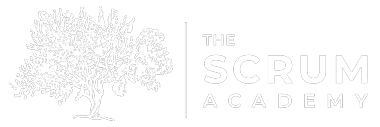Why Does Scrum Succeed in Some Places and in Other Places Fail?
The last post talked about LeSS and scaling Scrum. That I hope was good stuff, but I needed to lay to foundation to sharing Craig Larman’s observations about how organizations change and why Scrum is successful at changing some organizations and not very potent as a change agent in others. Everyone has seen this in action – some organizations and cultures Scrum will flourish and in others is just withers much to the disappoint for the people who actually had some hope (which unfortunately leads to Oblivion).
Recently, in the Scrum Trainers and Coaches Google group, the ultrasecret mailing list where a bunch of old white guys – myself included – decry the heresy that is our fellow Certified Scrum Trainers, Craig posted what he calls his “Four Laws of Organizational Behavior”. This post was one of the most interesting things I have seen on that mailing list in three years and I am going to quote Craig’s words directly with very minor editing.
- Organizations are implicitly optimized to avoid changing the status quo for middle-, first-level manager and “specialist” positions and power structures.
- As a corollary to (1), any change initiative will be reduced to overloading the new terminology to mean basically the same as status quo.
- As a corollary to (1), any significant change initiative will be derided as “purist” and “needing customization for local concerns” – which deflects attention from addressing the weaknesses related to the manager/specialist status quo.
- Culture follows structure i.e., if you want to really change culture, you have to start with changing structure, because culture does not really change otherwise. This is why deep systems of thought such as organizational learning are not very sticky or impactful by themselves, and why systems such as Scrum (that have a strong focus on structural change at the start) tend to more quickly impact culture. John Seddon also observed this: “Attempting to change an organization’s culture is a folly, it always fails. Peoples’ behavior (the culture) is a product of the system; when you change the system peoples’ behavior changes.”
What I really like about this framework is that it helps explain what I see in the field and helps me pinpoint the origin of resistance to Scrum. Resistance to Scrum is about preserving the status quo and all originates with all the people who created and defend the status quo. Of course, these managers and specialists will real change by co-opting the vocabulary of Scrum since the best weapon in their arsenal of resisting change is to obliterate all hope in the workplace. Scrum and Agile have been around for long enough that people know when it has been co-opted by management and once they see those signs, they check out and engagement declines.
Also, beware when you hear someone tell you that implementing the complete framework as described in the literature is only for “purist” or “only applies in the classroom”. What they are telling you is they know that culture follows structure and that if people act differently, they begin to behave differently and think differently about their work, their relationships with their colleagues and what they want out of their lives. In fact, that is what I trying to do when we implement Scrum in your organization.

